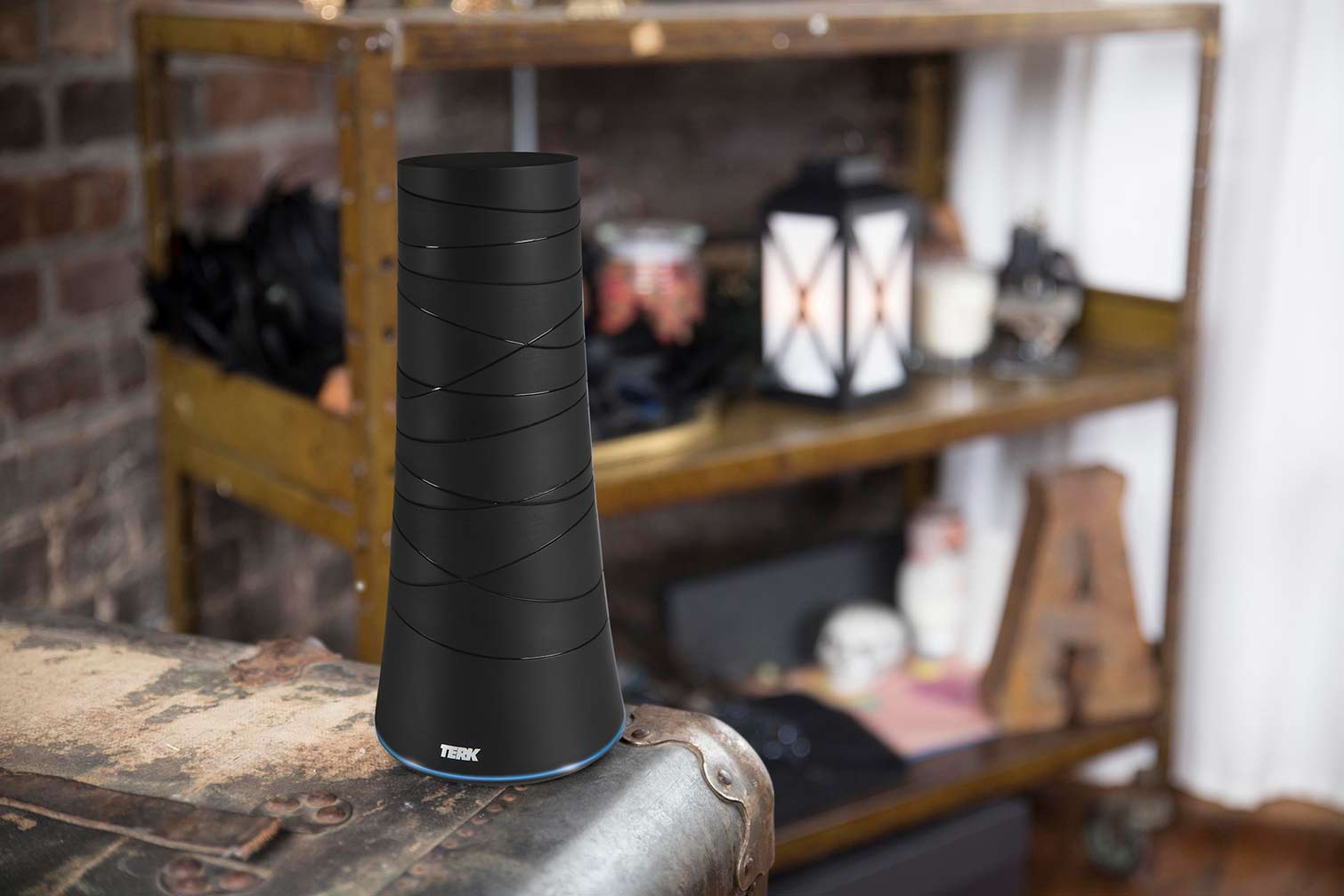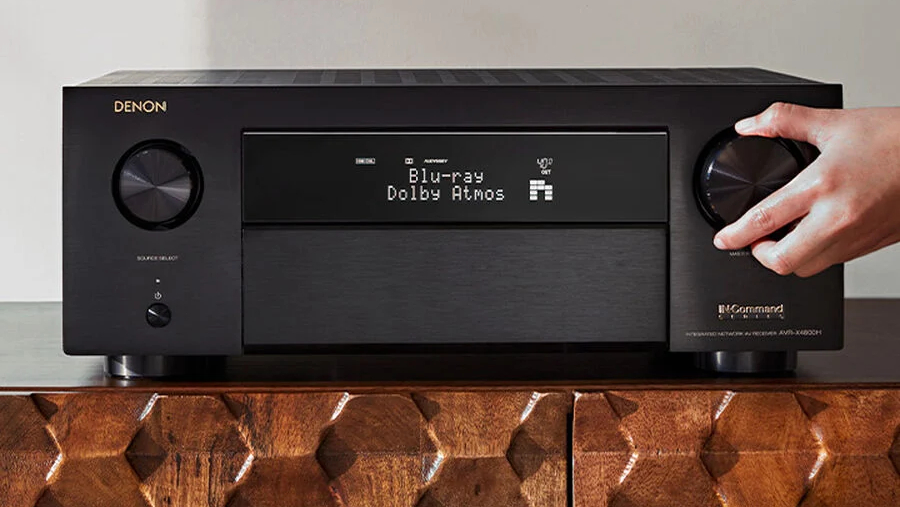Tom's Guide Verdict
A unique design with some interesting features, the Terk Multi-Directional antenna is not the best performer if you're trying to tune in as many stations as possible.
Pros
- +
Stylish design
- +
Good signal rejection
- +
Powered and nonpowered options
Cons
- -
Middling signal sensitivity
- -
Relatively expensive
Why you can trust Tom's Guide
Style isn't everything, but it counts for a lot. People buy edge-lit LCD TVs for the sets' slim profiles and high-tech gloss, for example, rather than going for thicker sets that deliver a better picture. Why ruin the effect with an obtrusive antenna that has to be taped to a window or wall? For such fashion-conscious shoppers, there's the $60 Terk amplified Multi-Directional HDTV antenna (OMNITWR). Its tapered, cylindrical design is easy on the eyes, and while this antenna doesn't pull in as many channels as some other models do, it consistently acquires reliable stations and rejects those with poor signals.
Design: A blue ring
Terk's black, cylindrical obelisk stands about 11 inches tall, with a blue LED ring at the base that illuminates whenever the amplifier is on. This is a relatively compact design, taking up less tabletop real estate than the Mohu Curve does.
The Terk's switchable amplifier is located about midway along the attached coaxial cable, which is about 8 and a half feet long. A toggle on the amplifier allows you to choose from among three settings: a "dual" position that uses an amplifier to deliver a 10-db signal boost and a preamp that's built into the antenna, a "preamp-only" setting (for situations in which full amplification is unnecessary), and a "bypass" setting that turns both amplifier and preamp off.

The Terk Multi-Directional antenna is as simple as other models to set up; just plug the coax into your TV and the antenna into an outlet. The company says the antenna has 360-degree reception (or, is omni-directional). In other words, as with most HDTV antennas, you don't have to point the Terk in a specific direction to get a TV signal. The one minor design glitch: The Terk doesn't use a USB plug and adapter for power, which would be handy if you just wanted to pull power from a TV's USB port, rather than hunting for another electrical outlet.
Performance: Few, but solid channels
The Terk Multi-Directional antenna was placed in our standard test location in New York City and connected to our current test TV, a Samsung KS9000. A company spokesperson said Terk is not providing a reception-range rating for the antenna, because too many variables can affect performance.
An initial scan using the TV's tuner pulled in 25 channels, without any amplification. Putting the antenna into preamp mode delivered 32 stations. One more notch up to the dual-amplified setting, and the Terk antenna brought in 35 channels. That's well shy of the more than 60 stations that models such as the Mohu ReLeaf have captured in the same test location.
MORE: Best Indoor HDTV Antennas for Cord Cutters
Get instant access to breaking news, the hottest reviews, great deals and helpful tips.
While the Terk antenna proved adept at pulling in only reliable signals, it was also exceptional at rejecting weaker signals. Most viewers will find this to be a significant benefit, because it means you don't waste time flipping through, or even starting to watch, channels that end up dropping the picture in a few minutes. All in all, only two of the 35 channels the Terk antenna pulled in were marginal or unwatchable.

At the dual-amplification setting, the Terk Multi-Directional antenna pulled in the major network affiliates in our area, including CBS, NBC and Fox. Many stations looked and sounded clearer than what nonamplified antennas deliver. Little House on the Prairie came in clearly on the Cozi network. Soap operas on Telemundo were sharp and consistent. The one obvious omission: the local ABC affiliate, which other antennas also have trouble capturing.
For comparison's sake, we also tested the antenna with the amplifier off, which made two stations, Buzr and the America Heroes channel, only marginally watchable. But there was still no ABC in any of the amplified or no-amplified modes.
Bottom Line
The Terk amplified Multi-Directional HDTV antenna was not a top performer in terms of the total number of stations it can receive. In our tests under near-identical conditions, the Mohu Curve 50 amplified antenna pulled in nearly twice as many channels, although it costs roughly $20 more. But the Terk antenna did capture a consistent range of stations, with fewer marginal channels, which can help reduce viewer frustration.
If you're in an area where the over-the-air stations are few and far between, look for a more sensitive indoor antenna, such as the Mohu Releaf or Curve models. However, if you're in a metropolitan area with plenty of choices and want a no-fuss, attractive-looking alternative, the Terk Multi-Directional will suffice.
John R. Quain has been reviewing and testing video and audio equipment for more than 20 years. For Tom's Guide, he has reviewed televisions, HDTV antennas, electric bikes, electric cars, as well as other outdoor equipment. He is currently a contributor to The New York Times and the CBS News television program.


